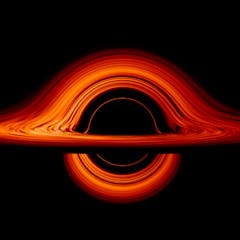
Artículos sobre General Relativity
Mostrando 1 - 20 de 66 artículos

A new measurement of gravity at small scales hints at an alternative to billion-dollar experiments for the future of physics.

It seems there isn’t a sci-fi part if the universe in which everything is made of antimatter.

Einstein’s theory of general relativity suggests that our universe originated in a Big Bang. But black holes, and their gravitational forces, challenge the limits of Einstein’s work.

Bright, flickering galaxies called quasars were thought to pose a problem for our understanding of the cosmos – but new research shows Einstein was right yet again.

Our two best theories of nature, quantum mechanics and general relativity, are incompatible with each other in many ways – leaving physicists to dig deeper.

Your experience of time is relative because it depends on motion – more specifically, your speed and acceleration.

Black holes could take us to the future, and maybe even the past. The hard part would be surviving the trip.

The theory of gravity may need to be altered.

Cutting-edge theories of physics suggest time may not be real – but even if they’re right, life can still go on as usual.

Physicists know a lot about the most fundamental properties of the universe, but they certainly don’t know everything. 2021 was a big year for physics – what was learned and what’s coming next?

Astronomers watched a pair of pulsars for 16 years to test the theory of general relativity, which has stood unchallenged for over a century.

Such a mission could be developed soon, allowing astrophysicists to take selfies of the solar system and use the Sun’s gravity as a lens to peer deep into space.

Gravity is something every person on Earth intuitively understands: It is what keeps you on the ground. But how come gravity pulls down, rather than pushes up? Einstein came up with the answer.

The world’s biggest gravitational wave observatory is now probing the limits of quantum mechanics.

If humanity wants to travel between stars, people are going to need to travel faster than light. New research suggests that it might be possible to build warp drives and beat the galactic speed limit.

Bending space into warp bubbles to travel faster than light may never be a reality, but distorting the flow of time just might be possible.

Calculations show that wormholes should create a spectacular display of gamma rays that we could try to observe.

Field theory describes the universe as energy flowing along unending lines. With this perspective, it is possible to define a new fundamental building block of matter.

Roger Penrose helped resurrect Einstein’s general theory of relativity, and Reinhard Genzel and Andrea Ghez showed there was a black hole in the middle of our galaxy.

Dark energy is probably a sea of constant energy in empty space itself, according to new research.
